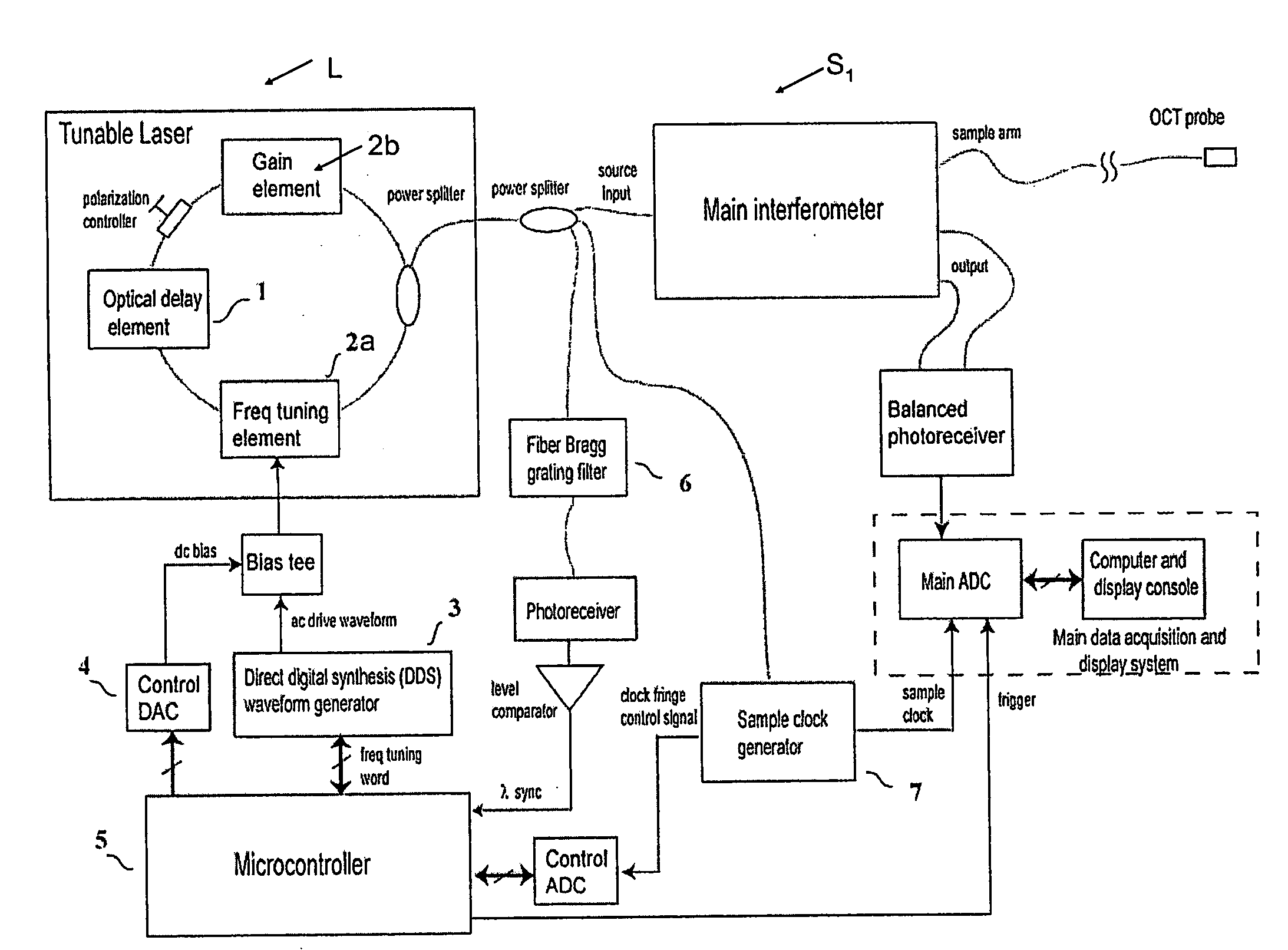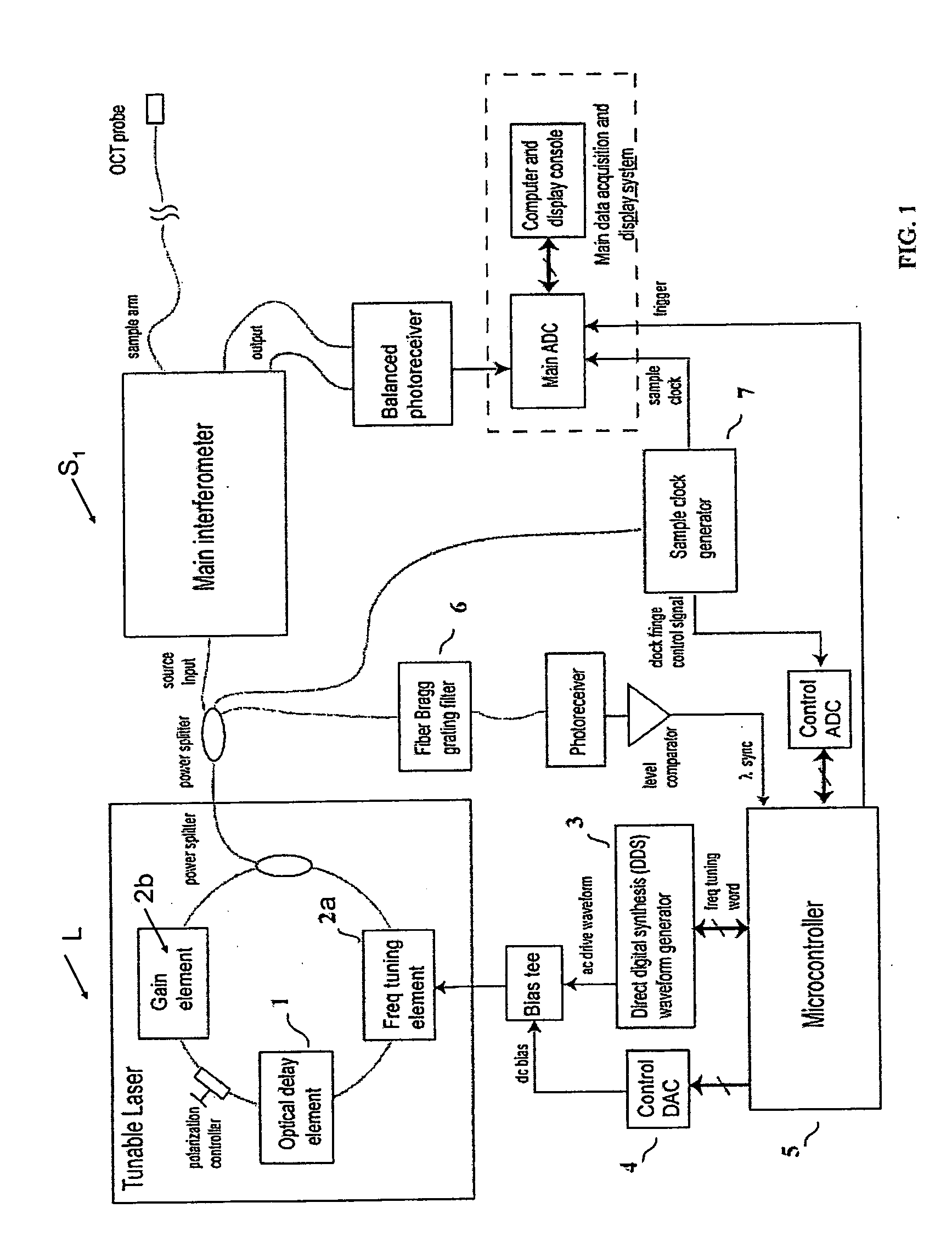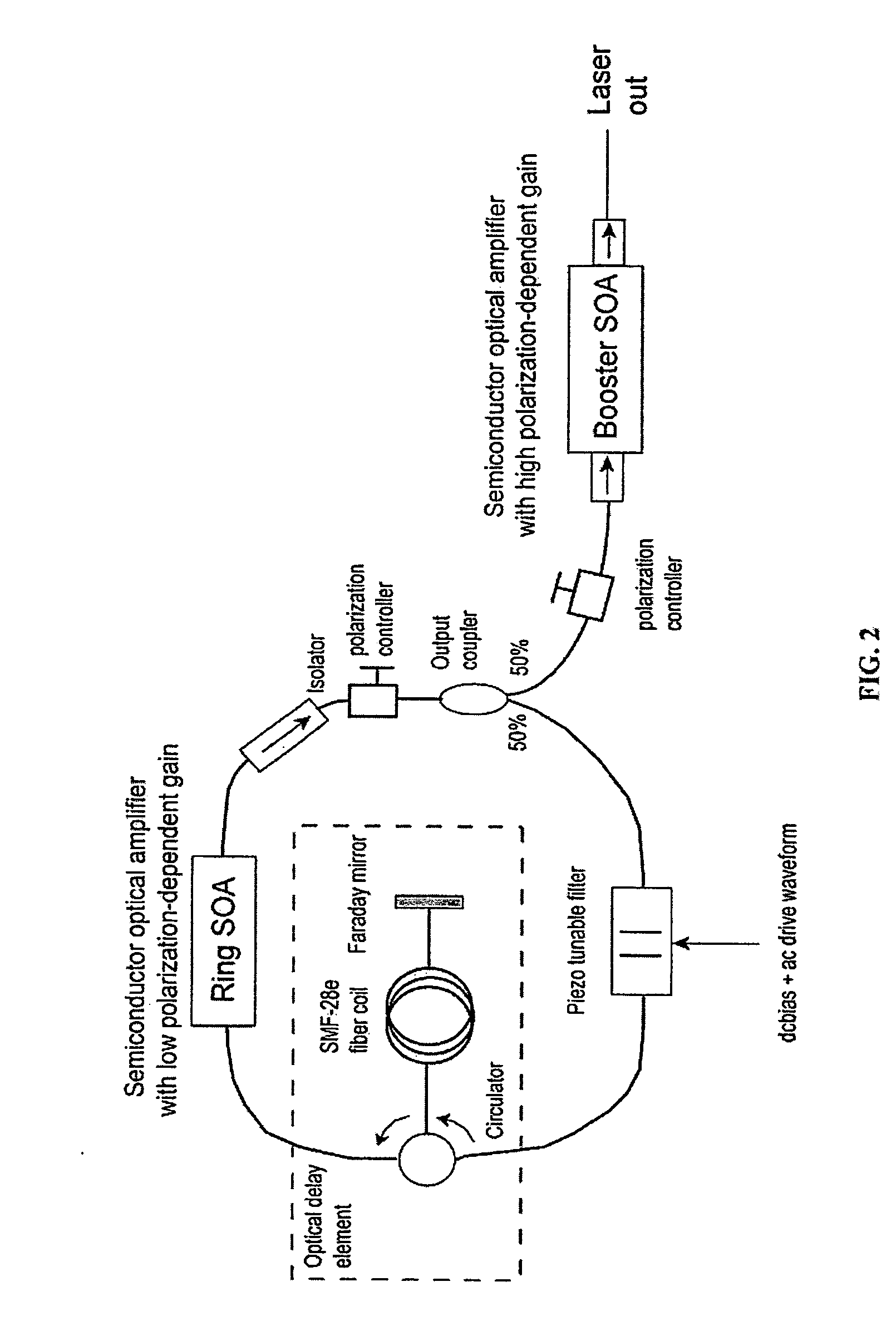Methods and apparatus for swept-source optical coherence tomography
a technology of optical coherence tomography and optical coherence, applied in the field of optical imaging, can solve the problems of limited scan range, phase jitter, poor noise performance, etc., and achieve the effects of low noise, high speed, and poor noise performan
- Summary
- Abstract
- Description
- Claims
- Application Information
AI Technical Summary
Benefits of technology
Problems solved by technology
Method used
Image
Examples
Embodiment Construction
[0045]The following description refers to the accompanying drawings that illustrate certain embodiments of the invention. Other embodiments are possible and modifications may be made to the embodiments without departing from the spirit and scope of the invention. Therefore, the following detailed description is not meant to limit the invention. Rather, the scope of the invention is defined by the appended claims.
[0046]In general, the invention relates to apparatus and methods for enhanced swept-source OCT system suitable for imaging various structures, such as those in a cadaver or living organism. Typically, these systems are based on a Fourier-Domain Mode Locking (FDML) approach. Using Fourier-Domain Mode Locking (FDML) when implementing the systems and methods described herein solves the problem of degraded signal-to-noise ratio and image resolution at large optical scan depths. However, the practical implementation of an FDML-based SS-OCT system presents several technical challe...
PUM
 Login to View More
Login to View More Abstract
Description
Claims
Application Information
 Login to View More
Login to View More - R&D
- Intellectual Property
- Life Sciences
- Materials
- Tech Scout
- Unparalleled Data Quality
- Higher Quality Content
- 60% Fewer Hallucinations
Browse by: Latest US Patents, China's latest patents, Technical Efficacy Thesaurus, Application Domain, Technology Topic, Popular Technical Reports.
© 2025 PatSnap. All rights reserved.Legal|Privacy policy|Modern Slavery Act Transparency Statement|Sitemap|About US| Contact US: help@patsnap.com



